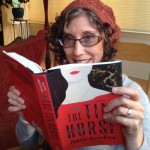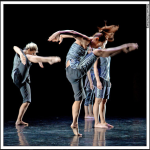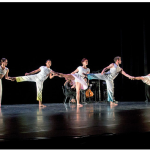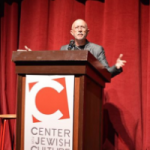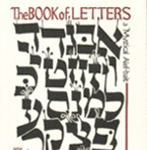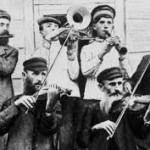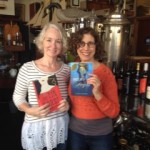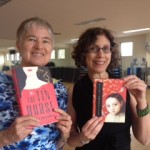 Wherever you go, there you are. Where I have gone is a cottage in Ashland, Oregon. My husband and I are doing a month-long stay here, seeing plays at the Oregon Shakespeare Festival and spending most of our time giving ourselves a writing retreat—I’m partway through a novel, and he’s working on a play.
Wherever you go, there you are. Where I have gone is a cottage in Ashland, Oregon. My husband and I are doing a month-long stay here, seeing plays at the Oregon Shakespeare Festival and spending most of our time giving ourselves a writing retreat—I’m partway through a novel, and he’s working on a play.
Our Ashland home, Quan Yin Cottage, is named for the Buddhist goddess of compassion. It’s at the Ashland Zen Center, and in the two weeks we’ve been here, Zen aphorisms have come to mind. Especially, “Wherever you go, there you are.” I thought of it initially on my second day here, when I was starting an entry in my novel diary. As I typed the date, July 1, I heard the words in my head, “Damn, I’m slow”—a lead-in to saying that I’d hoped, in this precious time I’m dedicating to the novel, the pages would pour out of me, but instead I was proceeding at my usual plod.
Wherever I go, if I try to do any writing, that self-flagellating voice comes along. I’m sure this is no surprise to anyone who writes. Anne Lamott in Bird By Bird, my Bible for writing and life, talks about Radio Station KFKD blasting in every writer’s mind. And a recent “Bookends” column in the New York Times Book Review posed the question: “Is self-loathing a requirement for writers?”
I had gone 900 miles from my home in San Diego, a two-day drive up the entire length of California. And there I was, whip in hand.
This time, though, the words in my head didn’t make it to my fingers. Instead, I wrote, “What if, in this holy place, I accept my process? Accept myself?”
 A word about holy places. I happen to believe places have their own energy, both physically and from what happens there. The Zen Center is relatively small and sits so discreetly on the street that the first few days we kept driving past the entrance; we’ve learned to spot it by the lavender bushes on either side of the driveway. There are three buildings—the main house and behind it the cottage and a craft building—at the front of the property. They’re painted a soft yellow and surrounded by shade trees, bushes, and flowers. Past the buildings are a towering cottonwood (my husband the mathematician estimates it’s 100 feet tall) and a flower garden with daisies, sunflowers, and lots of lavender. Farthest back, you get to berry bushes, mostly marionberries but also some raspberries and a little gold berry, and in a back corner are beehives.
A word about holy places. I happen to believe places have their own energy, both physically and from what happens there. The Zen Center is relatively small and sits so discreetly on the street that the first few days we kept driving past the entrance; we’ve learned to spot it by the lavender bushes on either side of the driveway. There are three buildings—the main house and behind it the cottage and a craft building—at the front of the property. They’re painted a soft yellow and surrounded by shade trees, bushes, and flowers. Past the buildings are a towering cottonwood (my husband the mathematician estimates it’s 100 feet tall) and a flower garden with daisies, sunflowers, and lots of lavender. Farthest back, you get to berry bushes, mostly marionberries but also some raspberries and a little gold berry, and in a back corner are beehives.
All of it is tended with obvious care. The house is immaculate and in good repair, someone has thoughtfully equipped the kitchen with all the basics we need (and a request for a larger salad bowl was met in seconds). And tending the grounds must be part of the spiritual practice: programs were on hiatus our first two weeks, and the only time anyone entered the yard, s/he was coming to water and prune—moving quietly, clearly mindful about disturbing a woman with a laptop.
Spread through the grounds are inviting benches and signs of devotion: stone statues of Buddha and, in front of our cottage, a serene Quan Yin.
The goddess of compassion visited me again last week. Late in the day, sitting at the desk I placed in front of the French windows, I was about to write, “Major farting around today.” But I stopped and considered: My novel deals with five members of a family. I had just finished a chapter focused on one family member, and I was pretty sure which one I wanted to feature in the next chapter—Rocky Rochman, the 27-year-old who finds God, which is pretty weird for him and his secular family—but I didn’t know what I was going to do with him. As a way in, I had read through earlier Rocky chapters that day and even found things I liked in them. But I had written nothing. Thus, naturally, the impulse to say I’d been farting around.
I decided to sit back and allow Rocky’s story to emerge. As another aphorism counsels, “Sitting quietly, doing nothing, spring comes, and grass grows by itself.” Then it did. Suddenly I knew Rocky’s next step into the waters of belief—he’d start to go by his Hebrew name, which was … I Googled and found a name that so tickled me I laughed out loud: Nachman. I loved the silliness of “ Nachman Rochman.” Plus, that name would connect Rocky to the revered Hassidic Rabbi, Nachman of Bratzlav. And in the next few days, Rabbi Nachman references appeared like gifts from the universe; I went to a class where the teacher quoted Nachman and to a service where the prayerbook included Rabbi Nachman’s Rules for Joy. For instance, “Nothing is as liberating as joy. It frees the mind and fills it with tranquility.”
Which brings me back to self-compassion. Happy as I am that, after I refrained from beating myself up, the juices started flowing, the important shift wasn’t the flood of ideas. It was that I treated myself with respect and kindness.
Wherever I go, there I am. But maybe being in a familiar place brings out only the most familiar parts of myself, and it took coming here to find my inner Quan Yin. I hope she’ll make the journey home with me.
